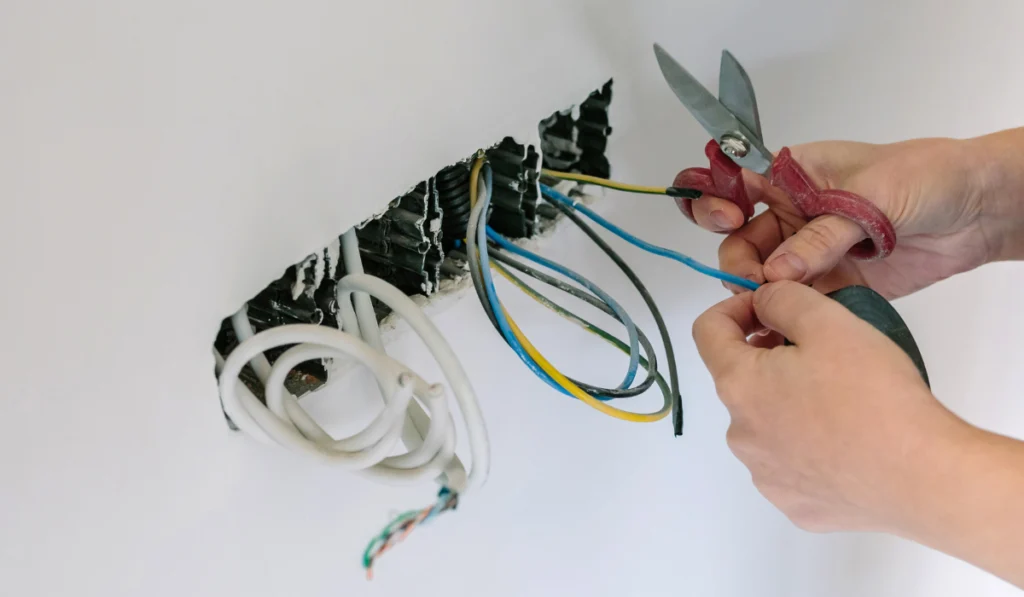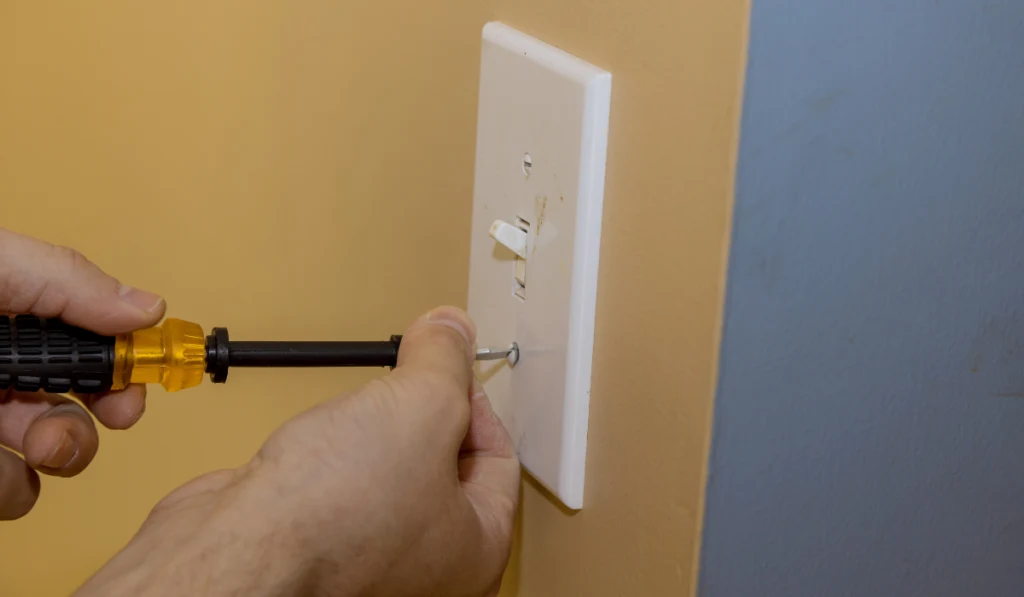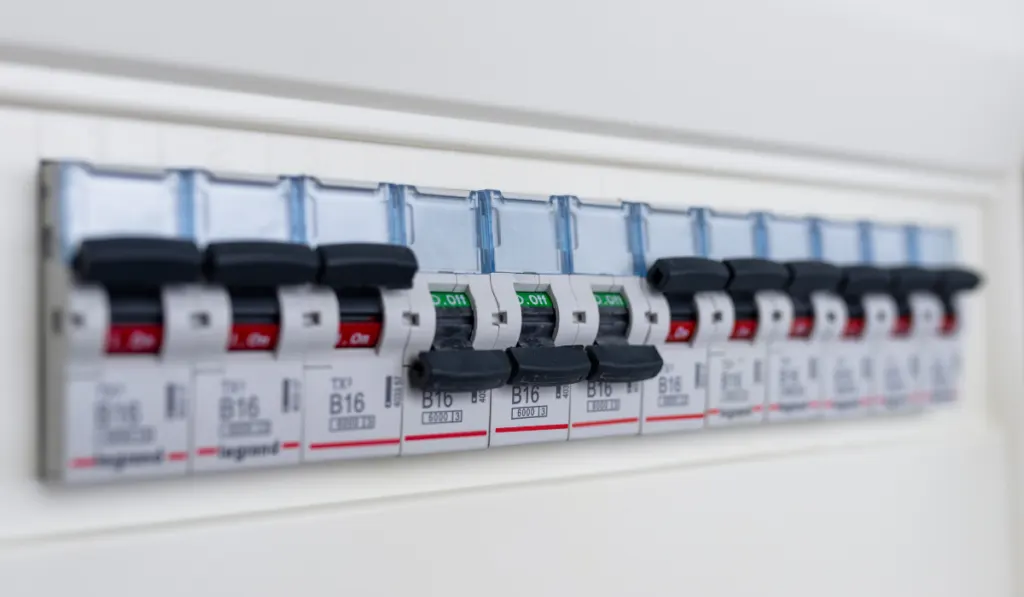*This post may have affiliate links, which means I may receive commissions if you choose to purchase through links I provide (at no extra cost to you). As an Amazon Associate, I earn from qualifying purchases. Please read my disclaimer for additional details.
Grounding light switches have, over time, been emphasized as a safety precaution.
If you enter an old house and find that the light switches were not grounded, you may be curious whether it’s important.
While it’s not mandatory to ground light switches, it’s crucial as it helps improve safety, protect your appliances from electrical surges, and prevent electric shocks if you use a metal light switch.
A lot goes into grounding and understanding the process can help you decide whether to ground your switches or leave them bare.
Read on to learn more about the grounding process, some of the grounding requirements, and how to ground light switches around your home.

Table of Contents
What is Grounding?
Grounding is running a wire from an electrical outlet to the earth. The action of grounding your switches protects you from making contact with electrical energy.
A home’s electrical system can be grounded through a conduit, or a wire pushed into the ground.
Is There a Problem If You Don’t Ground a Light Switch?
Yes, failure to ground your light switches increases the risk of experiencing electrical malfunctions.
Some building codes require light switches to be grounded and leaving the light switches as they are may get you penalized.
The risk is exposing your house to electrical fires due to faulty connections. You may experience frequent power surges if your house is not grounded.
Power surges can damage appliances in your home like the TV, fridge, and stove, not to mention computers.
Skipping on grounding your light switch may also expose you to electrical shocks.
Are You Legally Required to Ground Light Switches?
No, it’s not a legal requirement to ground light switches.
Even so, the requirements vary by state. You’ll find that some cities require light switches to be grounded to meet an electrical inspection or meet building regulation codes.

Should You Ground Smart Switches?
Although smart switches are replacing older light switches, they still need proper grounding. A smart switch will work without grounding, but grounding is still recommended.
However, the National Electric Code by the National Fire Protection Association dictates whether a certain state or city should ground its switches.
A licensed electrician in your area can clarify if this is a requirement.
What Grounding Requirements Should You Meet?
While there are no set requirements you should meet when replacing light switches, it’s good to understand how faceplates, whether plastic or metal, work.
You may also discover that some light switches don’t have an ground wire. That’s why experts recommend comparing the available options.
Light switches are attached to either plastic or metallic switch plates.
Plastic switch plates are inexpensive but can break and expose the internal wiring when over-tightened. Additionally, plastic faceplates won’t work if grounding is a requirement.
Metal switch plates are durable and easy to install. The only downside is that they are expensive. Grounding a metal switch plate also prevents electric shock.

Ways to Ground Your Switch
If you’re planning on grounding your switches through the DIY route, you must first verify that the system isn’t grounded.
There are tools to check this, or you can get an experienced electrician to inspect the wiring.
Grounding a Switch When You Have a Ground Wire
Here are some steps to follow.
Turn off the circuit before touching any screws, wires, or anything else. Alternatively, turn off the individual switch until power is restored if you can’t turn it off via the main breaker.
The next step is to attach the grounding wire to the metal box to ensure it’s grounded.
Although grounding a plastic switch plate isn’t necessary, installing a grounding screw and wrapping a grounding wire around the screw ensures it’s grounded.
Grounding a Switch Without a Ground Wire

Some light switches don’t come with a ground cable, so you need an alternative method to ground your light switch.
Using a metal screw in place of a ground wire is recommended.
To get started, you’ll need to:
- Turn off any breakers to ensure the switch has no running power.
- Connect the bare copper wire to the grounding screw on the metal faceplate using a screwdriver.
- Touch one probe and the other to each part of the grounding terminals to check for continuity. The multimeter should read zero Ohms.
- Attach the wire to its terminal on the circuit breaker box.
- Turn on all the breakers and test the switch to ensure it’s working.
Note that if the multimeter doesn’t read zero, you should call the electrician to check your system.
Final Thoughts
Grounding your light switch is a safety measure, but it’s not required to operate it. Having your light switch grounded prevents electrical shocks and surges that can damage your appliances.
If you’re struggling and can’t install the ground wire, contact an experienced electrician for assistance.
Resources
- https://lightow.com/how-to-ground-a-light-switch-without-ground-wire/
- https://www.hometips.com/how-it-works/standard-light-switch-wiring.html
- https://lightovo.com/post-do-light-switches-need-to-be-grounded/
- https://myintelligenthouse.com/do-smart-switches-need-a-ground-what-happens-if-you-dont-ground-the-switch/
- https://esfi.org/understanding-your-home-electrical-system/
- https://www.bhg.com/home-improvement/electrical/how-to-ground-electrical-wires/
- https://www.hunker.com/13414348/how-to-ground-an-electrical-outlet-with-no-grounding-wire
